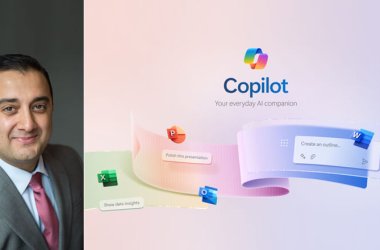 Microsoft showed today the next version of its Windows OS at a press event in Taipei, unveiling a completely new tile-based interface that it hopes will be better suited for the emerging world of tablet PCs.
Microsoft showed today the next version of its Windows OS at a press event in Taipei, unveiling a completely new tile-based interface that it hopes will be better suited for the emerging world of tablet PCs.
Microsoft called it a “reimagining” of Windows that will run on all types of devices from small, touch-sensitive screens to traditional large-screen PCs, and be able to work either with a keyboard and mouse, or without.
It is intended partly to make Microsoft a contender in the emerging tablet PC market, where its current Windows 7 OS has struggled to compete effectively with operating systems from Google, Apple and others. But the new interface is intended for use on all types of PCs.
Microsoft showed several prototype systems on stage running the software, including a tablet, a laptop and an all-in-one PC. The new interface is a significant departure from the traditional Windows desktop that Microsoft has relied on for decades.
The screens showed large, colored application icons that look in a way similar to those on Microsoft’s new Windows Phone 7 OS. Tapping an icon with a finger launches the application and allows it to take up the entire screen, without the usual Windows menus, system tray and scroll bars around the edges of the screen.
“The application comes quickly to life as Windows fades to the background,” said Michael Angiulo, corporate VP of Windows planning, hardware and ecosystem, who demonstrated the new software here.
The interface can be controlled using swipe gestures on devices that have touch-screens. Within an application, users can swipe a finger in from the right of the screen to make menu items for that application appear, for example, or from the left to switch between open applications. The interfaces shown on several prototype devices seemed to run smoothly, and Angiulo was able to swipe quickly through applications and menus on the screen.
Microsoft also highlighted a new platform for software developers that will rely on HTML 5, Javascript and CSS to let them build Web-connected applications for Windows 8 and Internet Explorer 10.
Windows Explorer and the Windows desktop will continue to be available, Microsoft said, and the software will be compatible with all Windows 7 applications and peripherals, according to Microsoft.
Still, there will likely be much for developers to learn, and Microsoft announced a new conference for developers, called Build, that will take place in Anaheim in September, where they can learn about the new OS. “Space is limited and registration is open right now,” Angiulo said.
Microsoft has also said that Windows 8 — which it continued to refer to as a “code name” — will be able to run on ARM-based processors from the likes of Qualcomm and Texas Instruments, as well as on the x86 platform from Intel and AMD, as it does today. ARM chips are used in most of today’s smartphones and tablets.
Angiulo showed some prototype ARM devices running Windows 8, and said ARM processors will not be limited to tablets. “ARM enables ultra-portable computers of all form factors,” Angiulo said.
Microsoft designed Windows 8 to meet the needs of a changing computer landscape, Angiulo said. “The trends we’re facing have changed,” he said. “Today we’re facing trends around immersive Internet computing, ultra-portable devices, and of course touchscreens. Windows 8 is a reimagining of Windows for those trends today.”
Several top executives from ARM, Qualcomm and other chip vendors joined Microsoft for its press event. It had also showed the new OS a few hours earlier in the U.S., at the Wall Street Journal’s D9 conference.





